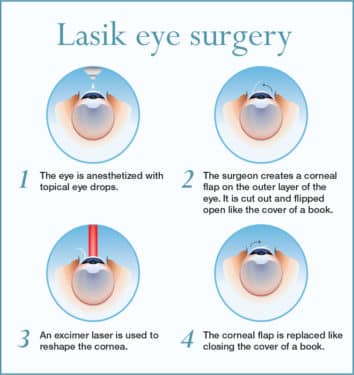Techniques Utilized By Pediatric Eye Specialists To Identify And Treat Typical Vision Disorders In Children
Techniques Utilized By Pediatric Eye Specialists To Identify And Treat Typical Vision Disorders In Children
Blog Article
Short Article Author-Levesque Mosley
When it comes to your youngster's vision, understanding just how pediatric eye experts diagnose and deal with usual problems is vital. These experts make use of various analysis methods to determine issues beforehand. From straightforward refractive mistakes to extra intricate conditions, understanding the readily available treatment alternatives can make a substantial distinction in your youngster's visual health. So, what details techniques do these experts utilize, and how can they aid your kid thrive?
Recognizing Common Vision Problems in Kid
When it pertains to your child's development, understanding common vision problems is crucial. Children can encounter different eye troubles, including nearsightedness, farsightedness, and astigmatism. These conditions might result in troubles in discovering, playing, or involving with others.
If you observe your youngster squinting, rubbing their eyes, or having trouble focusing, it is very important to take note. Early discovery can make a considerable difference in their general growth and scholastic success.
Strabismus, or crossed eyes, and amblyopia, known as lazy eye, are other concerns that can affect vision. These problems commonly require timely treatment to avoid long-lasting complications.
Diagnostic Techniques Utilized by Pediatric Eye Specialists
Recognizing vision concerns in your youngster is just the initial step; precise medical diagnosis is vital to efficient therapy.
Pediatric eye specialists use numerous analysis techniques to assess your child's vision. They'll start with a comprehensive eye exam, which includes examining visual acuity making use of age-appropriate approaches, like images or letters.
They'll additionally assess eye alignment and activity, ensuring both eyes interact smoothly. Furthermore, they may make use of specific devices, such as a retinoscope, to measure refractive mistakes.
For deeper insights, they may execute a dilated eye examination to evaluate the retina and optic nerve. By utilizing these techniques, professionals can pinpoint the precise nature of your youngster's vision problems and lay the groundwork for reliable services.
Therapy Options for Vision Problems in Children
Numerous efficient therapy options exist for dealing with vision issues in youngsters, customized to their specific needs. Depending on the medical diagnosis, your kid could gain from rehabilitative glasses or contact lenses, which can significantly boost their visual acuity.
For problems like amblyopia, patching the stronger eye can help reinforce the weak one. In visit the next internet site , vision treatment involving eye workouts might be recommended to enhance coordination and emphasis.
If your kid has strabismus (crossed eyes), surgery could be essential to realign the eyes. In addition, routine follow-up visits with a pediatric eye professional make sure that their therapy stays effective and changes are made as required.
It's necessary to deal with these concerns early for the best feasible end results.
Conclusion
In conclusion, pediatric eye professionals play an essential duty in identifying and dealing with vision issues in kids. By utilizing sophisticated diagnostic strategies and offering customized treatment options, they help ensure your kid's aesthetic wellness. Early discovery can make a considerable difference in their scholastic and social development, so don't be reluctant to schedule an eye examination if you notice any type of signs of vision troubles. Remember, https://www.dovepress.com/corneal-biomechanical-assessment-with-ultra-high-speed-scheimpflug-ima-peer-reviewed-fulltext-article-OPTH brings about a brighter, more clear future for your child.
